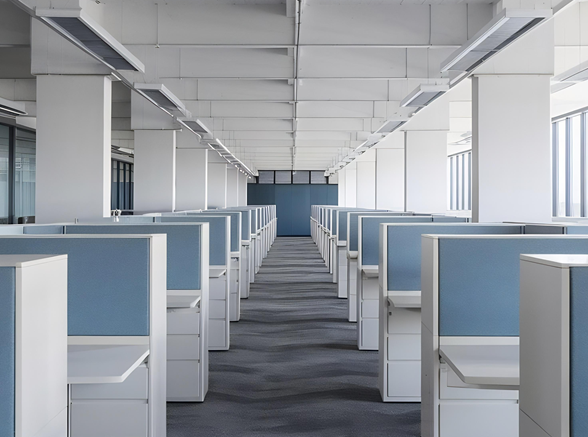
The workplace has evolved tremendously over the years, adapting to new technologies, employee needs, and cultural shifts. While some workplace trends have stood the test of time, others are best left in the past. From outdated office designs to questionable corporate policies, let’s take a trip down memory lane and revisit workplace trends that were once considered revolutionary but are now more of a cautionary tale.
1. Open-Plan Offices: More Distraction Than Collaboration
At one point, open-plan offices were heralded as the key to fostering collaboration and creativity. Companies tore down cubicle walls to create expansive, open spaces where employees could interact freely. However, research has since revealed that open offices often lead to increased distractions, lower productivity, and higher stress levels. Employees struggle with constant noise, lack of privacy, and increased exposure to workplace illnesses. Today, hybrid work models and flexible office spaces are replacing the one-size-fits-all open office concept.
2. Cubicle Farms: The Maze of Monotony
Before open offices, there were cubicle farms – rows upon rows of identical, tiny workspaces that gave employees little sense of individuality. While they offered more privacy than open offices, they also created an isolating and uninspiring work environment. The modern workplace now prioritises dynamic workspaces with collaborative zones, quiet rooms, and even remote work options to balance productivity and well-being.
3. The 9-to-5 Grind: Rigid Work Hours

The traditional 9-to-5 work schedule was once considered the gold standard for productivity. However, with advancements in technology, employees have proven that flexibility can lead to increased efficiency and job satisfaction. Today, many companies have embraced flexible work hours, remote work, and even four-day work weeks to accommodate different lifestyles and improve work-life balance.
4. Mandatory Suit-and-Tie Dress Codes
There was a time when business formal attire was non-negotiable in most workplaces. Suits, ties, and high heels were considered essential for professionalism. However, modern companies have realised that comfort does not equal unprofessionalism. Many workplaces now embrace business casual or even smart casual dress codes, allowing employees to dress comfortably while still maintaining a polished look.
5. Unpaid Internships: Work Without Pay?
Unpaid internships were once a rite of passage for young professionals looking to gain experience. However, this trend led to widespread exploitation, where interns worked full-time hours without compensation. As awareness grew, many companies shifted towards paid internships to ensure fair treatment and inclusivity in the workforce.
6. Pointless Meetings: Could’ve Been an Email!

Meetings are essential for communication, but many companies went overboard with back-to-back meetings that achieved little. The “this could’ve been an email” phenomenon became a common frustration among employees. Now, businesses are adopting smarter meeting practices – focusing on concise agendas, limiting unnecessary meetings, and using asynchronous communication tools to boost efficiency.
7. Forced Team-Building Activities
Escape rooms, trust falls, and awkward icebreakers were once thought to strengthen team dynamics. However, many employees dreaded these mandatory team-building exercises, which often felt forced and uncomfortable. Today, companies are shifting towards more organic team bonding experiences, such as casual social events, voluntary team outings, and wellness programs that employees actually enjoy.
8. The “Always Available” Work Culture
With the rise of smartphones and email, employees became reachable 24/7. The expectation to respond to work messages outside office hours led to burnout and decreased job satisfaction. Thankfully, many companies are now setting clearer boundaries, encouraging employees to disconnect after work, and even implementing policies that protect personal time.
9. Performance Reviews Once a Year
For years, annual performance reviews were the primary way employees received feedback. However, waiting an entire year to discuss progress and areas for improvement often led to stagnation. Companies are now embracing continuous feedback models, with regular check-ins, mentorship programs, and real-time performance tracking to help employees grow and succeed throughout the year.
10. Workplace Superstitions & Rituals
Believe it or not, some companies had bizarre workplace superstitions. From lucky office chairs to specific ways of arranging desks, employees followed odd traditions in hopes of boosting productivity. While a little superstition never hurt, modern workplaces now rely more on science-backed strategies for efficiency rather than age-old myths.
Final Thoughts
The workplace is always evolving, and what once seemed like an innovative trend may no longer be suitable for today’s workforce. Companies that prioritise flexibility, employee well-being, and smart technology will continue to thrive in the modern world of work. As we move forward, let’s leave these outdated workplace trends in the past where they belong.
How The GMP Group Can Help
At The GMP Group, we understand the changing dynamics of the workplace and help businesses adapt to modern workforce trends. Whether you’re looking for recruitment solutions, HR consulting, or career guidance, we’re here to support your growth in today’s evolving job market.
Visit www.gmprecruit.com to explore our services and future-proof your career or business.